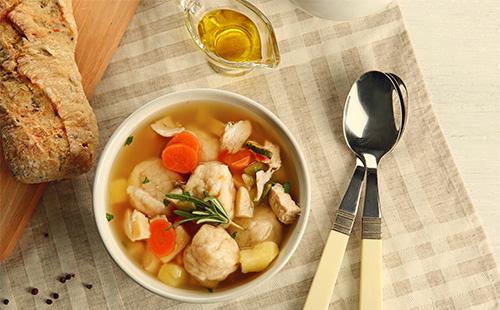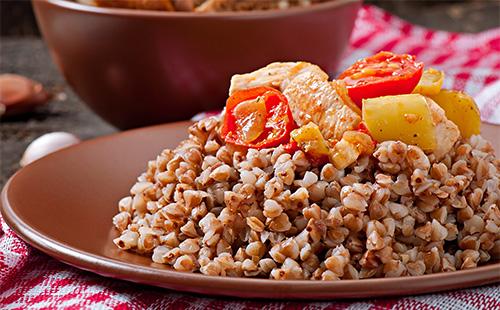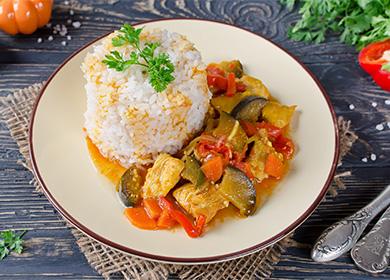The content of the article
A medical diet is one of the forms of therapeutic effect on the body that helps to restore the normal activity of internal organs. An abundance of diverse problems gives rise to various options for medical diets. Table number 2a refers to the list of gentle nutritional schemes that can provide the body with energy in the best form for its perception.
Who is shown a therapeutic diet number 2
For the application of even a gentle diet, weighty evidence is needed. For diet number 2 (table number 2) they are:
- gastritis - inflammation of the gastric mucosa;
- enteritis - inflammation of the mucosa of the small intestine;
- colitis - The inflammatory process is concentrated on the mucosa of the large intestine.
Indications of diet No. 2 include an acute and chronic form of diseases of the digestive tract. With an exacerbation of pathologies, the diet begins to be used on the third or fourth day after intensive drug therapy (that is, during the transition of the acute phase to the subacute). In chronic pathologies, the diet can be used for a long time. With the help of a special diet, a transition to a healthy diet system is organized. If we are talking about chronic inflammation of the gastric mucosa, then the appointment of this diet is possible with a reduced, preserved and increased secretion of gastric juice. But with the condition that the diet begins in the phase of remission.
An important feature of the purpose of this therapeutic nutrition for intestinal diseases is the absence of concomitant diseases of other digestive organs:
- pancreatitis
- cholecystitis;
- hepatitis A;
- gallstones.
Sometimes the second table is prescribed to patients who have undergone infectious diseases or surgical intervention. In this case, the doctor prescribes the diet in appointments for outpatient compliance.
What nutritional restrictions give the patient
Products in a special form (mechanically processed and having a neutral temperature) are introduced into the diet for diseases of the stomach and intestines for a reason. The purpose of the appointment of treatment table No. 2:
- provide the body with all the necessary nutrients;
- normalize and stabilize the energy intensity of the patient’s diet;
- gently strengthen or maintain in tone the secretory function of the gastrointestinal tract;
- normalize and stabilize the motility of the stomach and all sections of the intestine.
During the diet, the patient will be able to restore strength, ensure normal digestion, optimize the acidity of the digestive juices, get rid of inflammatory and putrefactive processes, normalize microflora, and also regulate the body's natural cleansing by normalizing motility.
Diet Overview
Medical diet No. 2 is physiologically complete. It implies the intake of all nutrients in a balanced amount, without intentionally creating a deficiency of proteins, fats or carbohydrates.
Despite the need to stimulate secretion, foods in the diet should not exhibit bright irritating properties. This excludes from nutrition:
- smoked meats and pickles;
- sour food;
- hot dishes;
- cold food and drink.
Diet is one of the most diverse, since it implies the use of all types of heat treatment in recipes, including frying and grilling. An important feature is the frying of billets without breading, so that a rough hard crust does not form on the surface, which can cause an inflammatory process. In this case, the use of eggs or liquid batter is not prohibited.
This type of nutrition implies a moderate mechanical effect on the mucous membranes. Products must be mechanically processed: be chopped, minced or minced.
Diet involves drinking plenty of fluids. Still water without any additives is welcome. It should have room temperature. In this scheme, it is important not to combine the use of water with meals, so as not to reduce the acidity of the gastric juice.
The daily chemical composition of the second medical table is as follows:
- vegetable protein - 40 g;
- animal protein - 60 g;
- vegetable fat - 25 g;
- animal fat - 75 g;
- carbohydrates - 420 g;
- pure salt - 15 g.
The approximate total weight of the daily diet should be equal to 2.9-3 kg. In the preparation of products, it is very important to observe the proportions of proteins, fats and carbohydrates (BJU), as well as the ratio of substances of animal and vegetable origin. The energy of the daily menu is close to 3000 kcal. The doctor can adjust the calorie content depending on the condition of the patient and his energy needs.
Diet during the diet involves a maximum of five meals per day. A moderate amount of servings is important - a large amount of food will disrupt the recovery of mucous membranes and provoke the development of putrefactive processes, inflammations.
What can I eat
The second medical table clearly defines the list of recommended and undesirable products. The preferred cooking method is steaming. But baking, ordinary cooking, stewing and even frying foods with a moderate amount of oil and a complete absence of breading are acceptable. Decide on what you can eat on diet No. 2 will help the table of products presented below.
Table - Nutrition and approved foods for diet No. 2
| Product Category | Dishes | Cooking method | Frequency of use |
|---|---|---|---|
| First meal | - Vegetable; - cereals; - with noodles; - meatballs; - borsch; - cabbage soup; - beetroot soup; - pickle | - Prepare on weak and non-greasy broths from meat and fish, vegetable and mushroom; - vegetables finely chopped; - cereals boil or grind; - in pickle replace cucumbers with brine | Daily up to two times a day |
| Bread | - Wheat bread of the first grade; - inedible rolls; - biscuit; - dry biscuits; - cheesecakes are not edible; - cakes with cottage cheese, jam, jam, apples | - Home bakery products are consumed after complete cooling; - bread can be stale, slightly dried in the oven or toaster | - Bread - daily; - baking - twice a week |
| Meat | - Beef; - veal; - lean pork; - rabbit meat; - turkey; - chicken; - beef tongue; - milk sausages or dumplings | - From minced meat to cook minced meat; - soft meat is prepared in pieces; - the tongue is well boiled; - sausages are thermally processed, but consumed by cooled | Daily, but taking into account the BJU diet |
| A fish | - All low-fat varieties; - caviar | Prepare minced fish, minced slices and whole steaks. | Few times a week |
| Dairy products, eggs | - All sour-milk drinks of moderate fat content; - fresh cottage cheese; - pudding; - cheesecakes; - dumplings with cottage cheese; - hard cheese; - sour cream; - milk; - nonfat cream; - scrambled eggs; - omelet | - Hard cheese is eaten in small slices or pre-grated; - sour cream is used to season dishes; - milk and cream are added to drinks; - eggs are added to dishes for baking and cooking | - Milk and sour milk - five times a week; - eggs - three times a week |
| Cereals | - Buckwheat porridge, rice, wheat; - cereal cutlets; - soft wheat noodles and vermicelli | - Cereals are boiled in water or meat broths; - prepare cereals with the addition of milk; - all casseroles and cutlets are cooked without a crust | As the basis of the menu |
| Vegetables | - potatoes; - pumpkin; - zucchini; - cabbage; - carrot; - beets; - green pea; - tomatoes; - greenery | - Vegetables boil well or grind to a state of mashed potatoes; - only ripe tomatoes are eaten raw; - greens are crushed before adding to dishes | Daily |
| Fruits and sweets | - apples; - peaches; - watermelon; - grapes; - apricot; - melon; - cherry; - fruit jams; - jam; - jelly; - fruit drinks; - compotes; - jelly; - iris; - marmalade; - marshmallows; - pastille; - honey | - Dense fruits are ground in mashed potatoes; - bake apples in the oven; - if possible, remove the skin from the fruit; - prepare jelly and fruit drinks (ideal) | As desserts |
Observing the second dietary table, the patient can afford to eat some snacks. For example, tomato salads with meat additives and eggs, mild hard cheese, low-fat jelly and aspic. Also, a special diet allows almost all pure and diluted fruit juices, tea and coffee with milk.
What to forget
The list of what you can’t eat on diet No. 2 is much narrower than the list of allowed foods. It is worth getting acquainted with it so as not to harm the already irritated mucous membranes of the digestive organs. So, contraindications to the second table include:
- first meal - The okroshka, pea and bean soups, with the addition of millet and pearl barley, as well as dairy are prohibited;
- bread products - excludes all buns, as well as home and purchased products from puff pastry, fresh bread;
- meat products - fiber types of meat (duck, goose), fried peel on chicken and turkey poultry, smoked meats and canned meat (lamb in small quantities) are prohibited;
- fish dishes - it is impossible to salted, dried, smoked fish, as well as canned food of any type, completely exclude fatty sea and river varieties;
- eggs - you can not use any hard-boiled;
- porridge- you can’t eat porridge or add millet to other dishes, barley, barley andcorn cereals, legumes;
- vegetables - banned all raw gifts of the garden, as well as cucumbers, peppers, radishes, garlic, onions, mushrooms;
- sweets - prohibited raspberry and currant berries, gooseberries, fresh and dried figs, date preparations, chocolate, creams, ice cream of all varieties.

How to make a menu
An approximate diet menu No. 2 can be not only balanced, healthy and gentle, but also varied and tasty. The general nutritional scheme can be determined by the proposed daily diet options.
Example No. 1
To provide the body with the necessary amount of dietary fiber will help not only vegetables, but also healthy cereals. It is important to take care of a sufficient amount of protein in food. Menu for the day:
- breakfast - steamed omelet, oatmeal on water with added butter, herbal tea or a cup of cocoa;
- dinner- soup cooked on pork or beef meatballs with the addition of potatoes and carrots, soufflé from chicken meat;
- dinner- boiled buckwheat, steam fish, kefir.
Light desserts, which can be eaten in between main meals, will help to stay in good shape throughout the day. This is jelly or fruit puree.
Example No. 2
Organizing meals on the second diet, you can pay attention to fruit salads, vegetable casseroles and stews. A varied menu for the day:
- breakfast - lazy dumplings with cheese, seasoned with sour cream, baked apple, coffee with milk;
- dinner - chicken soup with the addition of potatoes and noodles, a salad of steamed cauliflower and herbs with vegetable oil;
- dinner - stew of potatoes, carrots and zucchini with herbs, boiled or baked beef.
Throughout the day, you can eat with yogurt or fruit salad from baked apple and orange. If you want to eat before bedtime, you can afford a glass of fermented baked milk.

Example No. 3
Several times a week you can treat yourself to sweets - eat a little marmalade, marshmallows or marshmallows. Any compote of dried fruits or fresh berries is also suitable as a drink. Day menu:
- breakfast- sandwiches from dried bread with a moderate amount of butter, ham and hard cheese, sweet tea;
- dinner - buckwheat soup on chicken broth with boiled cereals and potatoes, on the second - noodles seasoned with sour cream sauce with herbs;
- dinner- mashed potatoes in milk, a salad of boiled beets and carrots, steam or chicken cutlets fried in an egg.
You can also diversify the menu with a liver or fish paste. A soft product can not only spread bread, but also fill pancakes with it, mix with mashed beets or broccoli.
The treatment table number 2, appointed by the doctor, is not a doom to fresh and monotonous food at all. If you follow the recommendations, the menu will be both tasty and healthy. Moreover, the diet will teach you how to stay healthy. This will not only ensure the good functioning of the digestive system, but also correct the figure, preserve the health of the heart and blood vessels, as well as youthful body and good spirits.
Reviews: “It is necessary to select products that do not cause gas formation and fermentation in the intestine”
The diet was prescribed to the son, after the consequences of an intestinal infection. I must say right away that the diet is really therapeutic, the child at least began to gain weight. I cooked mainly from chicken and turkey meat, low-fat broths, meatballs in a double boiler. Pasta only from hard varieties. Cooked porridge - buckwheat, corn, oat. son doesn’t eat semolina. Fresh bread is not allowed, dried in the oven crackers. Dairy products are all only low in fat, from sweets, only marmalade, marshmallows, marshmallows. It is necessary to select products that do not cause gas formation and fermentation in the intestine. In general, the diet, of course, is difficult for the child, but there is nowhere to go, you can not ignore it.
Victoria, http://diet.neolove.ru/therapeutic_diets/meditsinskaja_dieta_2.html © NeoLove.ru
After reviewing this diet, I came to the conclusion that it can be an excellent option for the transition to a normal and proper diet, not only for patients, but also for those who want to lose weight. The diet is completely physiologically complete and does not harm health, like many diets for rapid weight loss. And if you add physical activity that does not contradict common sense - success is guaranteed! You should only be patient and motivated!
Helena, http://jhealth.ru/all-diets/diet_2/

